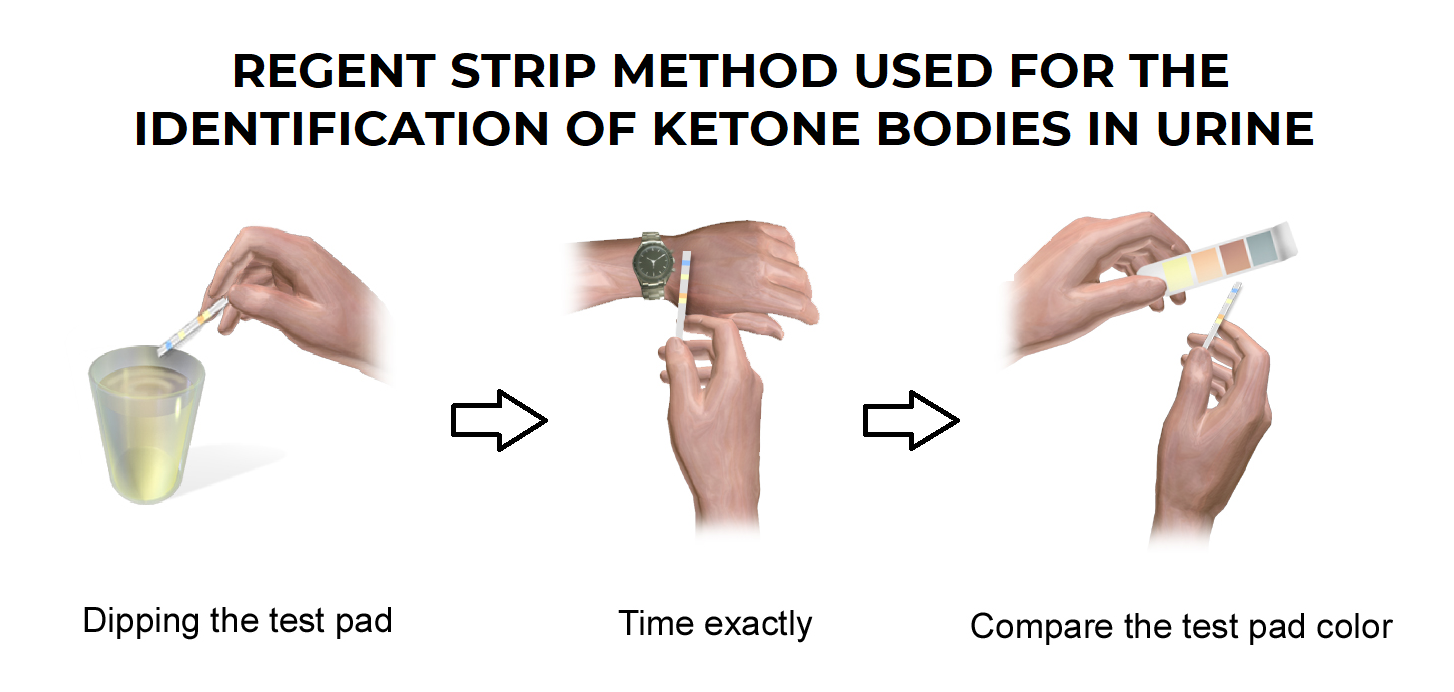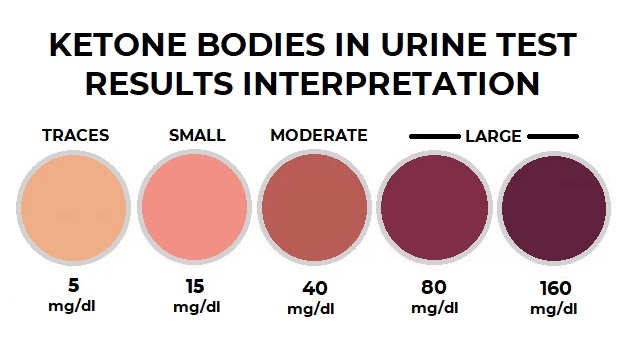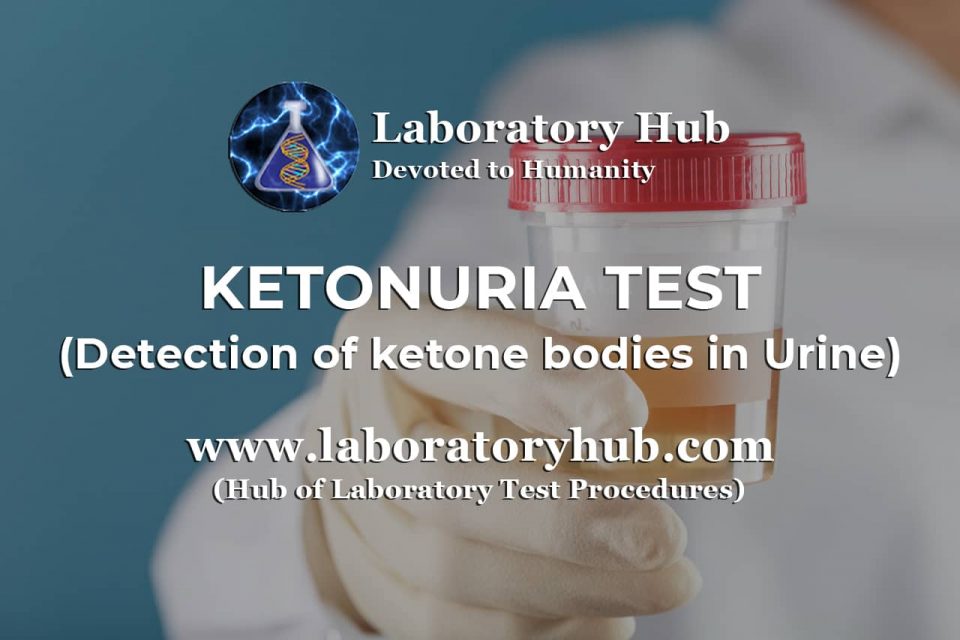Hey, Good to see you here 
What Are Ketones?
Ketones are water-soluble Molecules that are produced by liver when there’s not enough glucose (sugar) for energy.
Ketones can show up in blood or urine. It is normal to have a small amount of ketones in your body.
What Is Ketonuria?
Ketonuria is the High-level excretion of ketone bodies in urine. It is also known as ketoaciduria and Acetonuria.
This usually happens along with Ketoacidosis, a condition when too many ketones pile up in your bloodstream.
As ketone level rise in your blood your kidney try to get rid of them through urine.
What Are Ketone Bodies?
Ketone bodies are water-soluble Molecules that contain the ketone groups produce by the Liver.
There are 3 ketone bodies produced by the Liver. These include :
- Acetoacetate
- Beta- hydroxybutyrate
- Acetone

These are toxic acidic chemicals which are built up in the blood and then spill over into the Urine.
The presence of Ketone bodies in blood is termed as ketosis and presence of Ketone bodies in Urine is termed as Ketonuria.
What are the Causes of Ketonuria (Ketone Bodies in Urine)?
Ketonuria is most Common in individual having TYPE 1 DIABETES MELLITUS.
You can develop ketonuria even if you don’t have diabetes. Other causes of a ketonuria include:
- Drinking excess alcohol
- Pregnancy
- Drug use
- Starvation
- Excessive vomiting
- Illness of infection
- Emotional or physical trauma
- Heart attack
- Extreme exercise
- Medicine such as steroids
- Dietary imbalance (High fat/ Low carbohydrate diet)
What are the symptoms of a ketonuria?
Ketonuria may be a sign that you have ketoacidosis.
The higher your Ketone level the more severe the Symptoms.
Depending on the severity, sign and symptoms can include:
- Thirst
- Fruity smelling breath
- Dry mouth
- Fatigue
- Nausea or vomiting
- Frequent urination
Your Doctor may find related sign and symptoms of ketonuria-
- High blood pressure
- Significant dehydration
- Electrolyte imbalance
Additionally, there may be sign of illness such as – UTI (Urinary Tract Infection), Pneumonia.
What are the tests used to identify Ketones in Urine?
Ketone urine test measures the amount of ketone in the urine.
You can get the test done in the Laboratory or at your home.
Methods for detection of Ketone bodies in urine are-
- Rothera’s test
- Ferric chloride test
- Reagent strip test
What are the objectives of Identifying Ketones in Urine?
The test is often used to help monitor people at a higher risk of developing Ketone.
This includes TYPE 1 DIABETES (Patient can’t produce Insulin) Or TYPE 2 DIABETES (Patient can’t respond to Insulin).
If a person has too many ketones, they may be at a risk of developing Diabetic Ketoacidosis (DKA), a complication of diabetes that can lead to Death or Diabetic coma.
What is the Principle of Ketonuria (Ketone in urine) Test?
The Ketone urine test detects Acetoacetic acid and Acetone in urine.
The principle of the Ketone urine test is that the Keto group of Acetone and Acetoacetic acid reacts with Alkaline Nitroprusside to a purple colored complex.
Based on the colour intensity, the qualitative or quantitative analysis of ketone in urine can be done.
How to prepare the patient/person for the Ketone bodies in urine test?
Being a healthcare provider/ Laboratory Technologies, you have to give proper instructions to the patient to get the accurate report for the test.
Communicate with the patient that you may need to fast for at least 8-12 hours before the test.
Also discuss, If you are taking any medications or special foods/supplements/diet plans or have any other disorders, please discuss with your doctor for the suitable guidelines for the test.
What is the Procedure of Ketonuria (Ketone in Urine) Test?
Before the test procedure, you have to guide the patient for a clean catch sample. The steps are as follows :
Ask the patient to clean his/her hands properly before the sample collection.
Then, the genital areas and the urethral opening should be cleaned properly with water.
Educate the patient that, as you’ll start urinating, let the first few drops of urine to flow out in the Toilet Bowl.
Then, collect a midstream sample in the sterile container provided.
When you’re done, Close the container immediately and wash your hands.
Hand over the container to the Health care Provider.
The Procedure of Various tests performed to detect ketone bodies in urine
There are multiple methods available for the detection of Ketone bodies in urine. Below we have described the procedures of 3 most common methods used in the laboratory for the detection of ketone bodies in urine:
Nitroprusside Test (Rothera’s Test to detect ketone bodies in urine)
⇒ Take 5 ml of urine in a test tube with the help of a graduated dropper and saturate it with the Ammonium Sulphate.
⇒ Add a small crystal of Sodium Nitroprusside to the above solution and mix well.
⇒ Now, Slowly run along the sides of the test tube Liquor Ammonia to form a layer.
⇒ Immediate formation of purple permanganate colored ring at the junction of the two fluids indicate a POSITIVE Test.
Ferric Chloride Test (Gerhard’s Test to detect Ketone bodies in urine)
⇒ The addition of 10% Ferric Chloride solution to urine causes the solution to become reddish or purplish, If Acetoacetic acid (a type of ketone body) is present in urine.
⇒ The test is not specific since certain drugs (salicylate & L- dopa) give a similar reaction.
⇒ The sensitivity of the test is 25-50 mg/dl.
Reagent strip Test
⇒ Dip one urine dipstick in the urine container.
⇒ Hold it in the urine for 5-8 seconds
⇒ Take out the strip, remove the excess urine and dry the strip by shaking lightly.

⇒ Observe the colour of the strip, once the strip is dry.
⇒ Observe the colour against the chart that come with the kit.
⇒ Based on the intensity of colour, quantitative analysis of the Ketone Bodies can be done.
What are the Results and interpretation of Ketonuria (Ketone bodies in urine) Test?
The test results may vary depending upon your-
- Age
- Diet
- Sex
- Activity level
- Health history, etc.
NORMAL RESULT – Normal results are expressed as NEGATIVE.
ABNORMAL RESULT – Abnormal result means you have Ketone Bodies in your urine expressed as POSITIVE.
The Various range of Ketone bodies in urine test using Reagent Strip Method are as follows:

Following is the table showing the values of ketonuria test in millimoles/Liter, using reagent strip method:
| Range | Results |
| Under 0.6 millimoles / L | Normal urine ketone level |
| 0.6 to 1.5 millimoles / L | Higher than normal; Consult your doctor |
| 1.6 to 3.0 millimoles / L | Moderate urine ketone level; Need immediate consultation |
| Above 3.0 millimoles / L | Dangerously high level; Emergency Situation |
What are the uses of Ketonuria test?
The detection of Ketone Bodies in urine is essential as the presence of Ketones in urine can be a Symptom of a more severe condition like toxic Ketoacidosis.
That’s all about the Ketonuria, the detection of ketone bodies in urine … Happy Learning! 😎
Frequently Asked Questions (FAQs)
Q1. What is a ketonuria test?
A ketonuria test is a medical test that measures the amount of ketones in the urine to assess for the presence of ketoacidosis.
Q2. What are ketones?
Ketones are chemicals produced by the liver when the body does not have enough insulin to convert glucose into energy, causing the body to break down fat for fuel instead.
Q3. Why is a ketonuria test important?
A ketonuria test is important because it can help diagnose and monitor ketoacidosis, a serious medical condition that can result from uncontrolled diabetes or other metabolic disorders.
Q4. Who should get a ketonuria test?
A ketonuria test is typically recommended for individuals with type 1 diabetes, pregnant women with gestational diabetes, and individuals with other metabolic disorders.
Q5. How is a ketonuria test performed?
A ketonuria test is performed by collecting a urine sample, usually in the morning, and measuring the amount of ketones in the urine.
Q6. Is fasting required before a ketonuria test?
Fasting is not typically required before a ketonuria test, but individuals may be advised to avoid certain foods or medications that can affect the results.
Q7. Are there any risks associated with a ketonuria test?
There are no significant risks associated with a ketonuria test, as it is a non-invasive and simple test.
Q8. What do the results of a ketonuria test mean?
The results of a ketonuria test can help diagnose or monitor ketoacidosis, with higher levels of ketones indicating a greater severity of the condition.
Q9. What is the treatment for ketoacidosis?
Treatment for ketoacidosis typically involves addressing the underlying cause, such as regulating blood glucose levels, administering insulin, and providing fluids and electrolytes.
Q10. How often should someone get a ketonuria test?
The frequency of ketonuria testing depends on the individual’s medical history and current health status, but it may be recommended as part of regular diabetes management or during periods of illness or stress.
Q11. Can a ketonuria test be done at home?
Yes, ketonuria test strips are available for home use, but it is important to follow the instructions carefully and to consult with a healthcare provider if there are any concerns.
Q12. Can a ketonuria test be used to diagnose diabetes?
No, a ketonuria test alone cannot diagnose diabetes, but it can be used to monitor and manage the condition in individuals who have already been diagnosed.
Q13. Are there any factors that can affect the accuracy of a ketonuria test?
Certain medications, exercise, and dietary factors can affect the results of a ketonuria test, so it is important to follow any instructions provided by the healthcare provider.
Q14. What are some symptoms of ketoacidosis?
Symptoms of ketoacidosis can include nausea, vomiting, abdominal pain, confusion, difficulty breathing, and fruity-smelling breath.
Q15. Can a ketonuria test be used to monitor weight loss or a ketogenic diet?
A ketonuria test may be used to monitor ketone levels in individuals following a ketogenic diet, but it is not typically used to monitor weight loss or other diet-related changes.
References & Further Reading –
User Review
( votes)
Laboratory Hub aims to provide the Medical Laboratory Protocols & General Medical Information in the most easy to understand language so that the Laboratory Technologist can learn and perform various laboratory tests with ease. If you want any protocol to be published on Laboratory Hub, Please drop a mail at contact@laboratoryhub.com. Happy Learning!


1 comment
Very important learning site